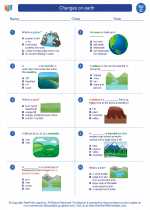Greases
Greases are a type of lubricant that are used to reduce friction and wear between moving parts. They are semi-solid materials composed of a base oil, thickener, and additives. Greases are commonly used in industrial machinery, automotive applications, and various other mechanical systems to provide lubrication and protection against wear and corrosion.
Composition of Greases
Greases are typically composed of the following components:
- Base Oil: Provides the primary lubricating function and can be mineral oil, synthetic oil, or a combination of both.
- Thickener: Acts as a sponge to hold the base oil and give the grease its semi-solid consistency. Common thickeners include lithium, calcium, and aluminum complexes.
- Additives: Enhance the performance of the grease by providing properties such as extreme pressure protection, oxidation resistance, corrosion inhibition, and water resistance.
Properties and Applications
Greases exhibit various properties and are used in a wide range of applications due to their versatility. Some key properties and applications of greases include:
- Viscosity: Greases are available in different viscosities to suit specific application requirements, from low-viscosity greases for high-speed bearings to high-viscosity greases for heavily loaded components.
- Temperature Range: Greases can operate within a wide temperature range, making them suitable for both low-temperature and high-temperature applications.
- Water Resistance: Certain greases are designed to repel water and maintain their lubricating properties in wet or humid environments.
- Extreme Pressure Protection: Greases formulated with additives for extreme pressure protection are used in applications with high loads and shock loading.
Selection and Maintenance
When selecting a grease for a specific application, factors such as operating temperature, load, speed, and environmental conditions should be considered. Additionally, proper maintenance practices, including relubrication intervals and quantity, are essential to ensure optimal performance and longevity of the equipment.
Study Guide
- What are the main components of greases?
- What are some common applications of greases?
- Explain the role of thickeners in greases.
- What properties make greases suitable for high-temperature applications?
- Why is proper maintenance important for greased components?
◂Science Worksheets and Study Guides Third Grade. Changes on earth

 Activity Lesson
Activity Lesson
 Worksheet/Answer key
Worksheet/Answer key
 Worksheet/Answer key
Worksheet/Answer key
 Worksheet/Answer key
Worksheet/Answer key
 Worksheet/Answer key
Worksheet/Answer key
 Vocabulary/Answer key
Vocabulary/Answer key
 Vocabulary/Answer key
Vocabulary/Answer key
 Vocabulary/Answer key
Vocabulary/Answer key
